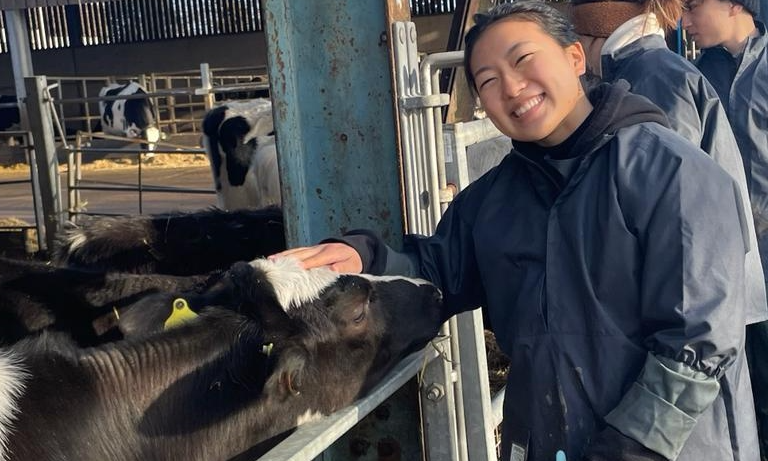Brucella canis: what vets need to know
14 Feb 2024
08 Apr 2024 | Risa Kunii
Risa Kunii, vet student at the Royal Veterinary College and Animal Aspirations member, discusses the importance of creating an inclusive environment to encourage equal opportunity for growth during extra-mural studies (EMS).

Being of Japanese descent but raised predominantly in Switzerland, my identity has always been in question. Like many from a marginalised background, I was taught that discrimination in the workplace is to be expected, whether that be from clients, colleagues, or both.
With the increase in the diversity of students enrolling in veterinary medicine across the country, it is critical that clinical EMS placements set an example by ensuring an environment that encourages equal opportunities for growth. While we cannot choose the interactions we have with our clients, we can encourage allyship in the team to ensure there is a community that promotes the learning and wellbeing of students and staff on placement.
The importance of acknowledging our differences
As I introduced myself to the team, I found myself working with vet and vet nurses alike from England, Scotland, Portugal, and Hong Kong, all with their own wild stories of how they came to work at the clinic. Ushering me to the main office, the head vet went over documents that I needed to sign: two were extensive contracts on the treatment of students and staff alike to address every individual’s right to their own sexual identity, sexual orientation, ethnicity (encompassing race, religion, and language), socio-economic status, and disability at the practice, followed by regulations on harassment and bullying. What is vital about these contracts was that they strongly emphasised the fair and equal treatment of individuals at the EMS placement, NOT “irrespective of” their differences, but by acknowledging and accepting that differences exist. In doing so, this encouraged us to validate the discrimination that individuals face whilst addressing the need for equal opportunities for growth within the EMS team.
I quickly found that my EMS team recognised our differences, but this did not take away from our similitude. Each and every member of the team could relate to the feeling of excitement and nervousness on their first day at the clinic, the feeling of uncertainty when learning a new skill, and the feeling of being unvalued when interacting with a difficult client. Whether you were a receptionist, an EMS student, a nurse, or a vet, you could be confident that you would be treated the same as anyone else in the team. Being open about what I felt comfortable with and what I found challenging was received with more curiosity than judgement, and the effort from the team to further facilitate and support the growth of the skills that I wanted to further.
EMS as a model for what makes a good team member
One moment that particularly stood out to me during my EMS placement was when a newly graduated vet nurse recounted her experiences about her previous employment. Being the youngest and the newest member of the team, she faced constant verbal harassment and bullying. She was made to feel unvalued and that her negative experiences with clients, and feelings pertaining to those experiences, were invalid. Not only this, but that her knowledge was lacking in all aspects by her own team.
Upon quitting and applying to this clinic, she had made the decision to leave veterinary medicine completely if she were to be subjected to the same experiences again. As she shared her story with me, she noted something profound: “It is unavoidable to face adversities in the profession, especially from clients. At the very least, there should be a community of people to have your back in your team.” It was clear she put her beliefs into practice. On that day, I believe she taught all of us that it is okay to rely on others and that your team should be a community in which you can confide about your mistakes or ask for support. Empathy, no matter how simple it may sound, may sometimes be the greatest gift.
Similarly, it is imperative to understand the impact of diversity on our colleagues. Actions, no matter how small, such as checking up on our team when they have experienced a negative consultation or discrimination, are vital. One of my friends recounted their EMS experiences as a Scottish veterinary student of Hong Kongese descent, whereby clients had made racist comments in the consultation room. In both cases, the vet had either pulled her out of the room or had spoken to her after the experience. In validating her experience of being discriminated against and providing a space to take herself out of the situation, she was able to have a much more positive and valuable learning experience whilst minimising compromise to her mental and physical wellbeing.
The importance of being inclusive
For many students, regardless of whether or not they belong to a marginalised group, being put into an unfamiliar environment for multiple weeks at a time, away from the comforts of their own community can be daunting. Although I have heard the argument that this trains young minds for adaptability, it would be unrealistic to disregard the other challenges that come with attending EMS placements, which disproportionately affect some individuals.
It’s crucial to create an inclusive community for EMS placements to set a solid example of how students can best support themselves and others to nurture not only an individual, but more importantly, a valuable team member who can go on fulfil their role in the profession.
Get tailored news in your inbox and online, plus access to our journals, resources and support services, join the BVA.
Join Us Today